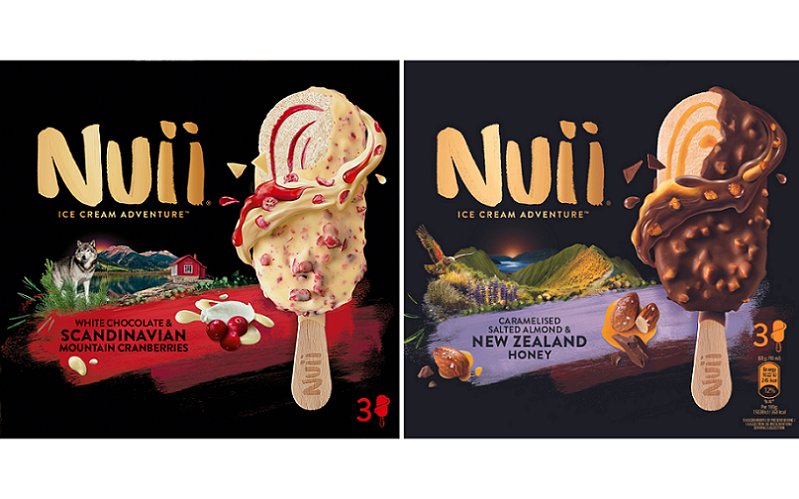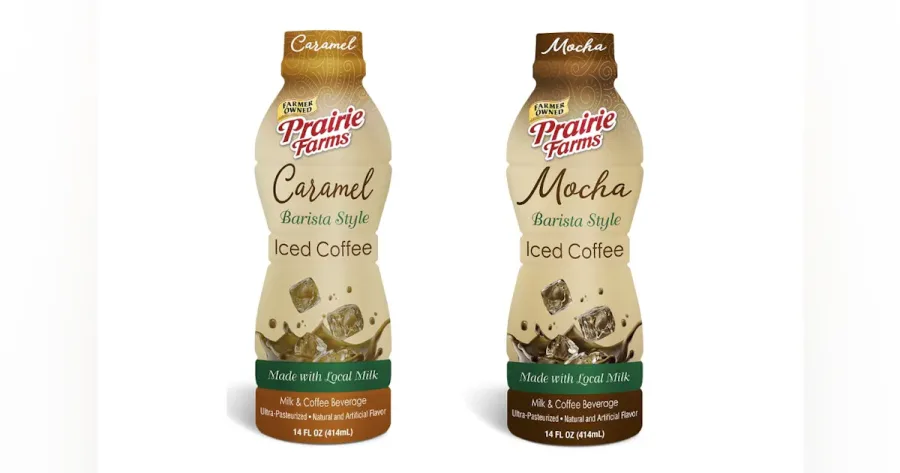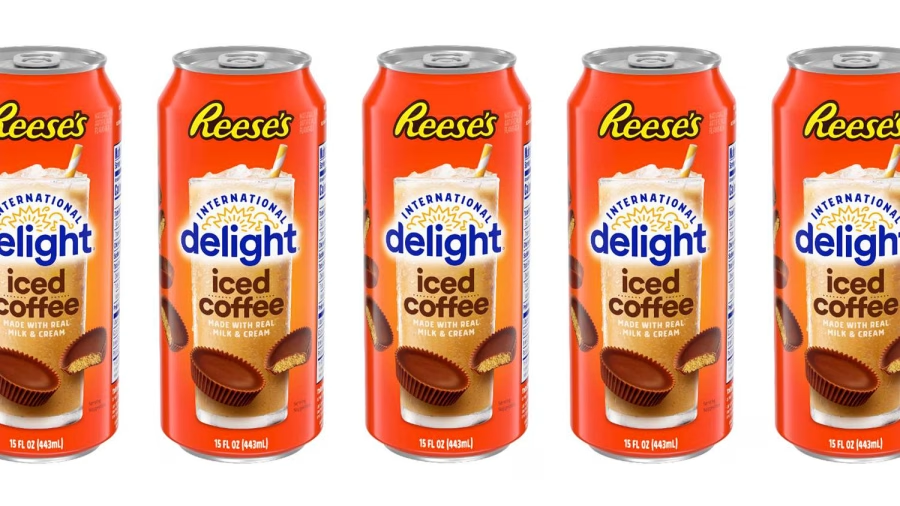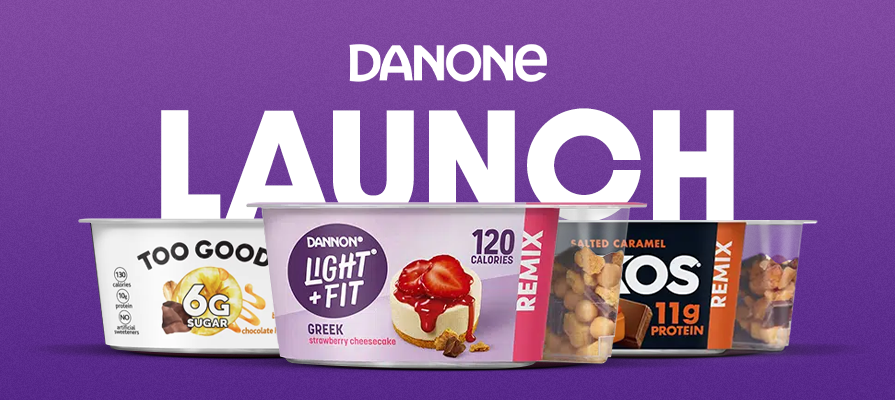Uncover the standout dairy product launches and pioneering innovations of 2024. With choices ranging from organic kefirs to protein-packed coffee, which one of these new dairy marvels will you sample first?
Welcome to our guide on the latest dairy product launches and innovations for the first half 2024. Staying informed about new dairy trends and products is more important than ever. With a growing interest in unique and innovative dairy offerings, consumers can be reassured that the industry is committed to providing fresh flavors, improved nutrition, and sustainable options.
Whether you’re a dairy enthusiast or just curious, keeping up with new launches can enhance your culinary adventures and support better dietary choices.
“Innovation distinguishes between a leader and a follower.” – Steve Jobs
In this article, we’ll explore new product launches month-by-month, showcasing the evolution of the dairy industry. There’s something for everyone, from delectable ice creams to nutritious yogurts and convenient milk alternatives to indulgent cheeses. Let’s dive into the world of dairy!
The Beginning of 2024: A Flourish of Dairy Innovations Catering to Both Palate and Planet
The beginning of the year marked a significant upsurge in dairy product launches and innovations, underscoring the dairy industry’s dynamic response to ever-changing consumer preferences and the pressing need for environmental sustainability.

In January, Straus Family Creamery unveiled its new organic low-fat kefirs, available in plain and blueberry flavors. Packaged in reusable glass bottles, these products embody the company’s commitment to climate-resilient practices and zero-waste goals.

Häagen-Daz joined the snackable ice cream market with Bites, a new format available in salted caramel and chocolate, tapping into the rising demand for bite-sized treats while upholding their legacy of premium ice cream.

Müller Yogurt & Desserts partnered with Mondelēz’s Cadbury brand to introduce new milkshakes in the UK and Ireland. The chocolate and chocolate caramel varieties, made with milk from UK farms and Cadbury milk chocolate, promise a delightful blend of quality and taste.

Carnation Breakfast Essentials made a significant stride with the launch of a fruit and protein nutritional smoothie in Strawberry Banana. This product offers a nutritious breakfast option with reduced sugar and enriched with 21 vitamins and minerals, setting a new benchmark for morning nutrition.

Seattle-based Darigold Inc. entered the coffee creamer market with Belle, introducing flavors like Vanilla, Sweet Cream, Hazelnut Latte, and Caramel. These creamers are made with only five simple ingredients for pure and rich flavor.

Yoplait Protein catered to protein enthusiasts with new high-protein yogurt flavors, including Vanilla, Strawberry, and Key Lime Pie.

Kraft Singles expanded its flavor lineup for the first time in nearly a decade, introducing Jalapeño, Garlic and herb, and Caramelized Onion, aiming to refresh consumer palates with bold new tastes.
February Unveils Dairy Innovations that Intrigue and Delight

February introduced a host of intriguing dairy innovations. Froneri expanded its Nuii chocolate ice cream stick line with two new flavors. The Caramelised Salted Almond & New Zealand Honey blend combines caramelized almonds with rich honey, creating a delightful taste. The honey-flavored variant, paired with creamy vanilla ice cream and milk chocolate, satisfies those craving sumptuous treats.

Prairie Farms launched single-serve drinks, adding Mocha and Caramel flavors. These ready-to-drink options cater to coffee lovers seeking robust flavors in a convenient format.

Magnum, owned by Unilever, launched Pink Lemonade and Blueberry Cookie ice cream sticks. The refreshing Pink Lemonade is perfect for warm days. At the same time, the vegan Blueberry Cookie option offers a creamy, plant-based indulgence.
March Highlights: Health Benefits, Unique Flavors, and Packaging Innovations

March saw significant dairy product launches emphasizing health benefits, unique flavors, and innovative packaging. Leading the way was Alexandre Family Farm, which introduced the first A2/A2 organic digestible dairy European-style sour cream, rich in probiotics for gut health, catering to consumers focused on digestive wellness.

Sargento expanded its snacking lineup with Fun! Balanced Breaks, Fiesta Pepper, and Smokehouse String Cheese Snacks. These convenient, nutritious snacks feature innovative packaging for easy transport and freshness, perfect for busy lifestyles. The Smokehouse variety offers a distinctive smoky flavor and high protein content.

Gifford’s Ice Cream announced its first year-round pint line with seven new flavors, meeting consumer demand for variety and quality. Their visually appealing, innovative packaging ensures freshness, enhancing the overall consumer experience and providing a delightful, wholesome treat.
April Continues the Dynamic Momentum: A Slew of Exciting Launches

April’s momentum brought captivating dairy innovations for both enthusiasts and casual consumers. TruMoo’s Star Wars-inspired Blue Milk, a limited-time vanilla-flavored low-fat milk, merged pop culture with daily dairy consumption, catering to Star Wars fans and showcasing how brands engage audiences through themed products.

Meanwhile, Prairie Farms Dairy expanded its lactose-free offerings with new whole and 2% milk, cottage cheese, and sour cream options. This move towards inclusivity ensures lactose-intolerant consumers enjoy a range of dairy products without compromising taste or texture.

In collaboration with Hershey’s, International Delight unveiled REESE’S Iced Coffee in ready-to-sip cans. This partnership combines REESE’s indulgent flavors with the convenience of grab-and-go coffee, demonstrating the potential of brand synergy in creating innovative products.

Danone North America launched REMIX, a variety of yogurts and dairy snacks with mix-ins under its Light + Fit, Oikos, and Too Good & Co. brands. REMIX offers a playful and customizable yogurt experience, enriching consumers’ dairy intake.

Crystal Farms Dairy Co. introduced ten new cheese items, including Deluxe Melts and Snack Cubes, expanding their cheese portfolio and emphasizing diversity and quality to cater to various consumer preferences and culinary uses.

Belton Farm rebranded its Red Fox aged Red Leicester cheese, enhancing its packaging and branding to attract a broader audience while maintaining its heritage and flavor profile.

La Colombe Coffee Roasters debuted a new 11 fluid-oz. Draft Latte cans under Chobani’s leadership. These cans merge high-quality coffee with convenient packaging, setting a new standard in the ready-to-drink coffee market.
May Breathes New Life into Dairy: Innovations That Marry Convenience with Indulgence

May demonstrated the dairy industry’s dedication to expanding its product range and meeting consumer demands via innovation and partnerships. Arla Foods’ deal with Mondelēz to produce and distribute Milka chocolate milk in three European countries exemplifies the power of collaboration. This move leverages Mondelēz’s strong brand in the chocolate market, likely capturing a significant share of the flavored milk market, especially among younger consumers and chocolate lovers.

Anchor introduced Squeezy, a blend of butter and rapeseed oil in a convenient bottle that simplifies cooking and baking. This product, targeting busy households, combines convenience with the rich butter flavor, appealing to a broad age group seeking efficient kitchen solutions.
June Ushered in an Impressive Array of Dairy Innovations Tailored to Diverse Consumer Needs

June showcased an impressive range of dairy innovations, emphasizing the industry’s commitment to diverse consumer needs. In collaboration with Arla, Starbucks launched a high-protein RTD coffee range, offering 20 grams of protein per bottle. These June innovations collectively enhance consumer choice and satisfaction in the dairy aisle.
The Bottom Line
The first half of 2024 witnessed a dynamic array of dairy product launches, reflecting the industry’s dedication to evolving consumer preferences. Health-conscious options like Carnation Breakfast Essentials’ protein smoothies and Yoplait Protein cater to those seeking nutritional benefits. At the same time, Alexandre Family Farm’s A2/A2 organic sour cream addresses gut health.
As seen in Straus Family Creamery’s reusable packaging and Milkadamia’s organic macadamia milk, sustainability remains paramount. Darigold’s Belle Creamers emphasize clean ingredients, underscoring eco-friendly practices and positioning these brands as leaders in responsible innovation.
Flavor innovation also took center stage. Häagen-Daz’s bite-sized ice creams, International Delight’s REESE’S Iced Coffee, and TruMoo’s STAR WARS-inspired Blue Milk showcase the industry’s ability to create exciting taste experiences. New flavors from Kraft Singles and Bubbies Ice Cream’s mochi further highlight dairy’s potential within the sector.
Expect more groundbreaking developments in health, sustainability, and flavor innovation as the dairy industry continues to cater to evolving consumer expectations.
Key Takeaways:
The first half of 2024 ushered in a wave of dairy product launches aimed at meeting diverse consumer preferences, sustainability goals, and nutritional enhancements. Here are the key takeaways:
- Organic and sustainable practices gained traction, with companies like Straus Family Creamery emphasizing climate-resilient packaging and zero-waste goals.
- Convenience and snackability were major themes, evident from Häagen-Daz’s introduction of Bites and Darigold Inc.’s Belle coffee creamers.
- Nutritional innovation featured prominently, as demonstrated by Carnation Breakfast Essentials’ low-sugar Strawberry Banana Smoothie and Organic Valley’s probiotic-rich dairy products.
- Partnerships and collaborations expanded product offerings, such as Müller Yogurt & Desserts’ milkshakes with Cadbury and International Delight’s REESE’S Iced Coffee.
- Traditional product lines saw new flavors and variety, with Kraft Singles rolling out Jalapeño, Garlic & Herb, and Caramelized Onion, and Gifford’s Ice Cream launching a year-round pint line.
- Emerging brands like Milkadamia and NIÚKE introduced novel dairy alternatives, including organic macadamia nut milk and quinoa milk.
- Major corporations like Unilever and Sargento continued to innovate with Magnum’s new ice cream stick variants and Sargento’s expanded snacking options.












